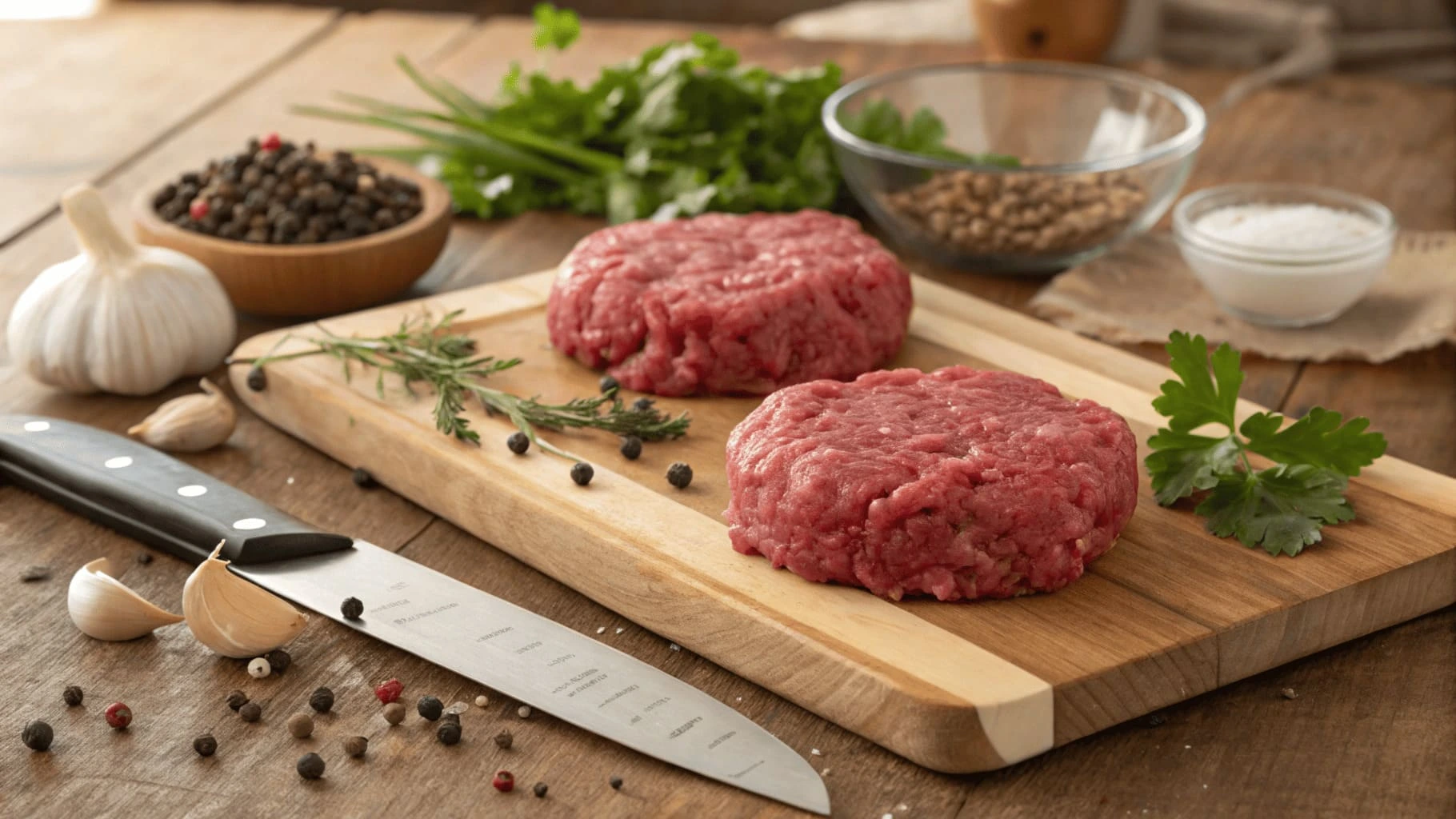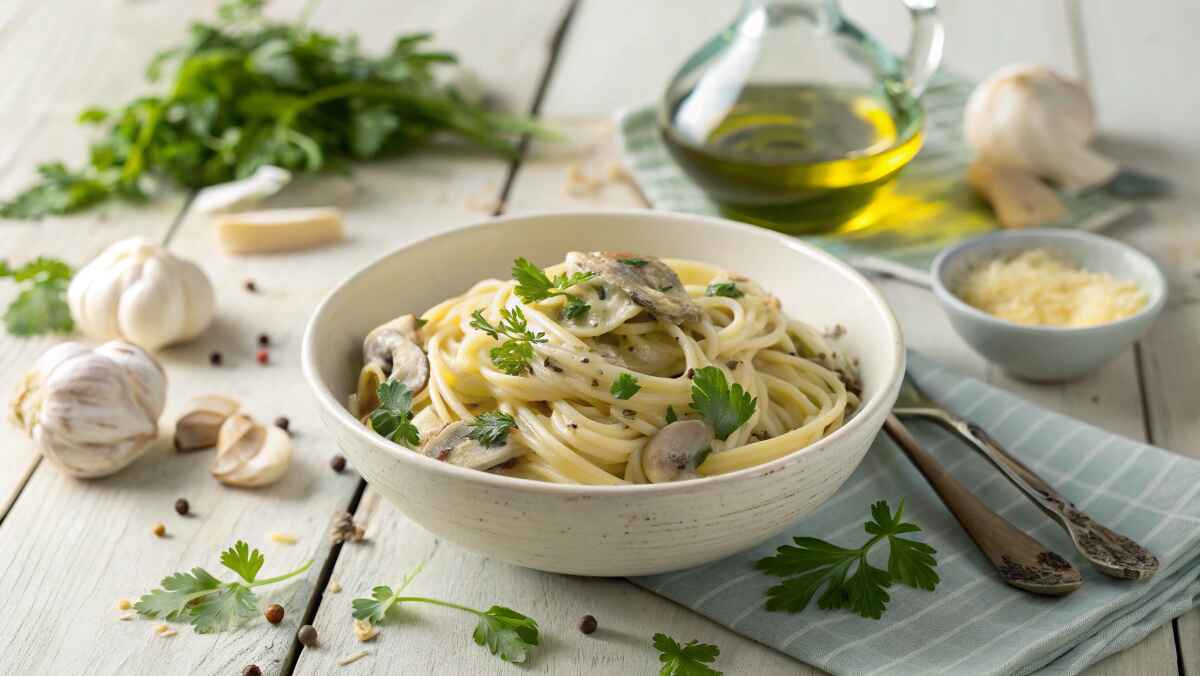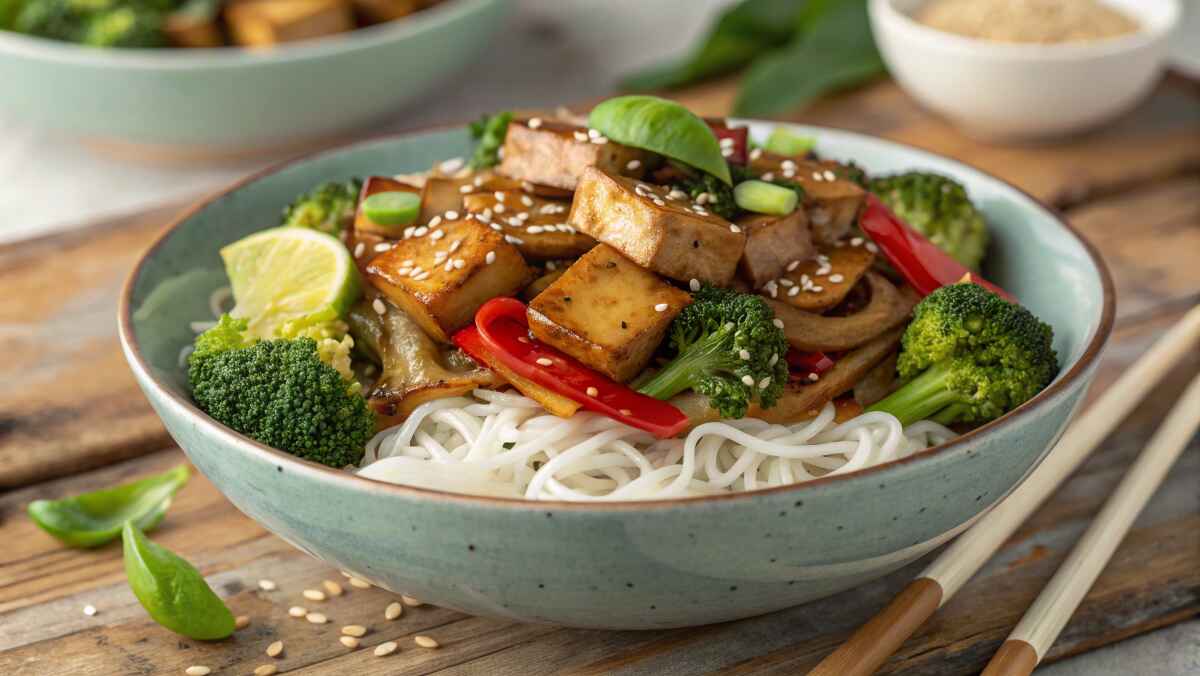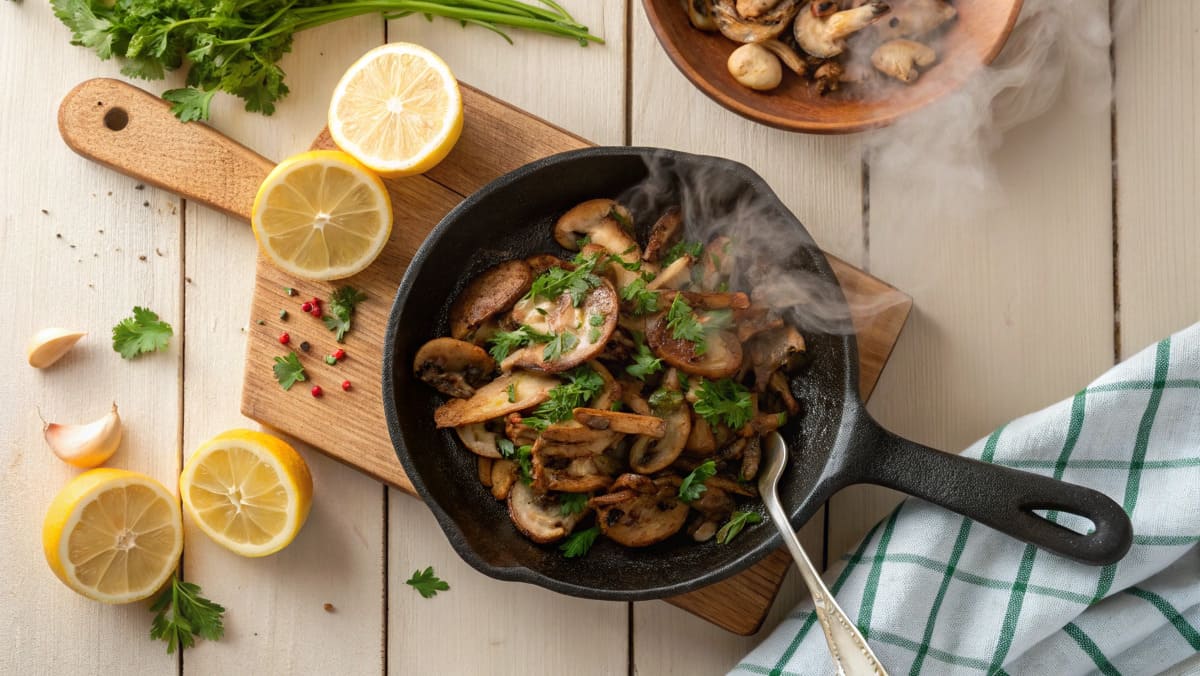When it comes to cooking delicious, hearty meals, 80/20 ground beef and ground chuck are two of the most commonly used beef options. While they may seem similar at first glance, they each have distinct qualities that can impact the flavor, texture, and overall success of your dish. Choosing the right type of ground beef ensures better moisture, richness, and consistency in your cooking.
Both 80/20 ground beef and ground chuck are excellent choices for a variety of recipes, but they are not always interchangeable. The key differences lie in their fat content, source cuts, and how they behave when cooked. Understanding these distinctions will help you make informed decisions when preparing everything from juicy burgers and flavorful tacos to tender meatballs and comforting casseroles.
In this guide, we’ll break down the composition, best uses, and cooking benefits of each type of ground beef so you can select the best option for your culinary needs.
What Is 80/20 Ground Beef?
The term 80/20 ground beef refers to a blend that contains 80% lean meat and 20% fat. This fat-to-lean ratio creates the perfect balance of moisture, flavor, and texture, making it an ideal choice for dishes that require juiciness and tenderness. The extra fat content in 80/20 ground beef ensures that your food remains moist and flavorful, especially when cooking at high temperatures, such as grilling, pan-searing, or broiling.
Because of its rich taste and superior mouthfeel, 80/20 ground beef is often the top choice for burgers, tacos, and casseroles. The rendered fat enhances the flavor of your dish, giving it a succulent and satisfying bite. However, for recipes where you need a firmer texture with less grease, you may want to consider ground chuck as an alternative.
As we explore the differences between 80/20 ground beef and ground chuck, you’ll discover which one best suits your cooking style and favorite recipes. Whether you’re making a classic burger, a homemade meat sauce, or a comforting meatloaf, choosing the right ground beef can elevate your dish to the next level! 🍔🥩🔥
Key Features of 80/20 Ground Beef
- Meat Blend:
Butchers achieve this ratio by blending cuts like chuck, sirloin, and round. - Flavor and Moisture:
The fat provides juiciness and ensures the beef doesn’t dry out during cooking. - Versatility:
This blend works well for frying, grilling, and slow-cooking recipes.
Learn more about its benefits in our Complete 80/20 Ground Beef Guide.
What Is Ground Chuck and Why Is It Special?
Ground chuck is made exclusively from the chuck primal cut of the cow, located near the shoulder. This cut naturally aligns with the 80/20 ratio, offering consistency in texture and flavor.
Why Choose Ground Chuck?
- Source Specificity:
Ground chuck comes entirely from one cut, ensuring a bold, beefy flavor. - Natural Fat Ratio:
The chuck cut’s marbling provides the ideal mix of lean meat and fat for moisture and richness. - Shape Retention:
Perfect for burgers and meatballs, ground chuck holds its form during cooking.
Explore our Guide to Meatballs for ideas using ground chuck.
Differences Between 80/20 Ground Beef and Ground Chuck
Although both often share the 80/20 fat-to-lean ratio, their differences lie in consistency, source, and use.
1. Meat Source
- 80/20 Ground Beef: A mix of various cuts like sirloin, round, and chuck.
- Ground Chuck: Sourced exclusively from the chuck section.
2. Fat Distribution
- 80/20 Ground Beef: Blended to achieve a consistent fat-to-lean ratio.
- Ground Chuck: Naturally achieves the 80/20 balance due to its marbling.
3. Culinary Applications
- 80/20 Beef: Ideal for casseroles, tacos, or recipes requiring crumbled beef.
- Ground Chuck: Best for burgers, meatballs, and meatloaf, where structure matters.
When to Use 80/20 Ground Beef vs. Ground Chuck
Choosing between 80/20 ground beef and ground chuck depends on your recipe’s specific needs. Both options offer unique benefits, and understanding when to use each ensures the best results in flavor, texture, and overall dish quality.
When to Use 80/20 Ground Beef
1. All-Purpose Ingredient
If you’re preparing versatile dishes like tacos, casseroles, or sauces, 80/20 ground beef is an excellent choice. Its balanced fat-to-lean ratio allows it to crumble easily, making it ideal for recipes where the beef is mixed with other ingredients.
- Tacos: The fat content helps keep the beef moist and flavorful, even when seasoned heavily with taco spices.
- Casseroles: In layered or baked dishes, 80/20 beef blends seamlessly with other components, like cheese and vegetables, while adding richness.
- Pasta Sauces: The fat in 80/20 beef enhances the flavor of marinara, Bolognese, or creamy Alfredo sauces.
2. Consistent Fat Content
The evenly blended fat ratio in 80/20 beef ensures that every batch cooks consistently. This uniformity is especially beneficial for dishes requiring even cooking, like:
- Shepherd’s Pie: Ensures the beef layer remains juicy under the mashed potato topping.
- Stuffed Bell Peppers: Provides reliable moisture retention during baking.
3. Prioritizing Moisture and Flavor
If your recipe depends on the richness and juiciness of the beef, 80/20 is your go-to. The fat acts as a flavor carrier, enhancing the taste of spices and other ingredients.
- Chili: The fat adds depth to the dish and prevents the beef from becoming dry during long cooking times.
- Sloppy Joes: Keeps the meat filling tender and flavorful while balancing the tangy sauce.
When to Use Ground Chuck
1. Shape-Retaining Recipes
Ground chuck is ideal for recipes where the beef needs to hold its shape during cooking. Its natural fat and lean meat combination creates a firm structure that remains intact under heat.
- Burgers: Ground chuck forms patties that won’t crumble on the grill or skillet, while the natural fat ensures juiciness.
- Meatballs: Provides the firmness needed to maintain their round shape, whether baked or simmered in sauce.
- Meatloaf: Ensures a cohesive loaf that slices cleanly while staying moist inside.
2. Bold, Beef-Forward Flavor
Ground chuck’s single-origin cut delivers a robust, beefy flavor that stands out. This makes it the preferred choice for recipes where the meat is the star ingredient.
- Grilled Burgers: The rich flavor shines through with minimal seasoning, making it perfect for classic cheeseburgers.
- Stuffed Burgers: The bold taste complements fillings like cheese, onions, or mushrooms.
- Kofta: In Middle Eastern dishes like spiced meat skewers, ground chuck’s distinct flavor pairs well with aromatic herbs and spices.
3. Uniformity and Consistency
Because ground chuck comes from a single cut of beef, it offers consistent fat distribution and texture. This uniformity ensures reliable results every time you cook.
- Smash Burgers: Ensures that every patty cooks evenly, developing a crispy exterior and tender interior.
- Swedish Meatballs: Produces a smooth, uniform texture that holds up well in creamy sauces.
Summary: Choosing the Right Beef
- Choose 80/20 Ground Beef for its versatility, moisture, and ability to adapt to a wide range of dishes.
- Choose Ground Chuck for recipes requiring structure, bold flavor, and consistency.
Nutritional Comparison: Which Is Better?
Nutritionally, both options are similar, with only slight variations based on the specific cuts used.
Typical Nutritional Values (Per 3 Ounces, Raw)
- 80/20 Ground Beef:
- Calories: ~230
- Protein: ~19g
- Fat: ~17g
- Ground Chuck:
- Calories: ~230
- Protein: ~20g
- Fat: ~16g
Cooking Tips for Maximum Flavor
1. For Juicy Burgers
- Ground Chuck: Retains its shape and delivers a firmer texture on the grill.
- 80/20 Ground Beef: Adds moisture, perfect for pan-fried patties.
2. For Meatballs or Meatloaf
- Ground chuck is ideal due to its ability to hold together while retaining moisture.
3. For Tacos or Sauces
- Use 80/20 beef for its ability to crumble evenly, enhancing the richness of your dish.
4. Fat Reduction
- Drain excess fat after cooking or blot cooked meat with a paper towel for a lighter option.
Cost Comparison
Ground chuck is often slightly cheaper than 80/20 ground beef because it comes from a more affordable cut. However, pricing can vary depending on location and availability.
Key Takeaways
- 80/20 Ground Beef: A versatile choice for a variety of recipes, offering consistent fat content and moisture.
- Ground Chuck: Ideal for dishes requiring shape retention, with its naturally balanced fat ratio and bold flavor.
Choosing the right beef depends on your recipe’s needs. Both options offer unique benefits, ensuring flavorful, satisfying meals.
Frequently Asked Questions
1. Can ground chuck be labeled as 80/20 beef?
Yes, if the fat-to-lean ratio matches the 80/20 standard.
2. Is ground chuck healthier than 80/20 ground beef?
Nutritionally, they’re almost identical. Cooking methods and preparation make the biggest difference.
3. Can I substitute ground chuck for 80/20 ground beef?
Yes, they’re interchangeable in most recipes. However, ground chuck is better for recipes requiring structure.
4. How can I tell if I’m buying ground chuck or 80/20 ground beef?
Check labels for “ground chuck” or consult your butcher for clarification.
🥩 Choosing Between 80/20 Ground Beef and Ground Chuck 🍔
Understanding the differences between 80/20 ground beef and ground chuck is essential for making the best choice in your cooking. While both options offer great flavor and versatility, knowing how they perform in different dishes ensures you achieve the perfect taste and texture every time.
If you’re craving juicy, flavorful burgers, 80/20 ground beef is the ideal choice 🍔. Its higher fat content keeps patties moist and tender, making it perfect for grilling. On the other hand, ground chuck, with its slightly leaner profile, works beautifully in meatballs, tacos, and casseroles, where a firmer texture and less grease are preferred.
By selecting the right type of beef for your recipe, you can enhance flavors, improve consistency, and elevate your cooking. Whether you’re grilling, pan-searing, or slow-cooking, understanding these distinctions helps you make more informed decisions in the kitchen.
Looking for hearty comfort food ideas? Try pairing your beef dish with a creamy side—this guide on how to make potato soup with hash browns 🥔🥣 offers an easy, satisfying option! And if you’re curious about caloric intake, check out the breakdown of chicken fried steak with mashed potatoes 🍽️.
For more ground beef cooking tips and recipe inspiration, explore different meal pairings, like low-carb chips with the best dips 🥑🔥. Happy cooking! 🍽️🔥




